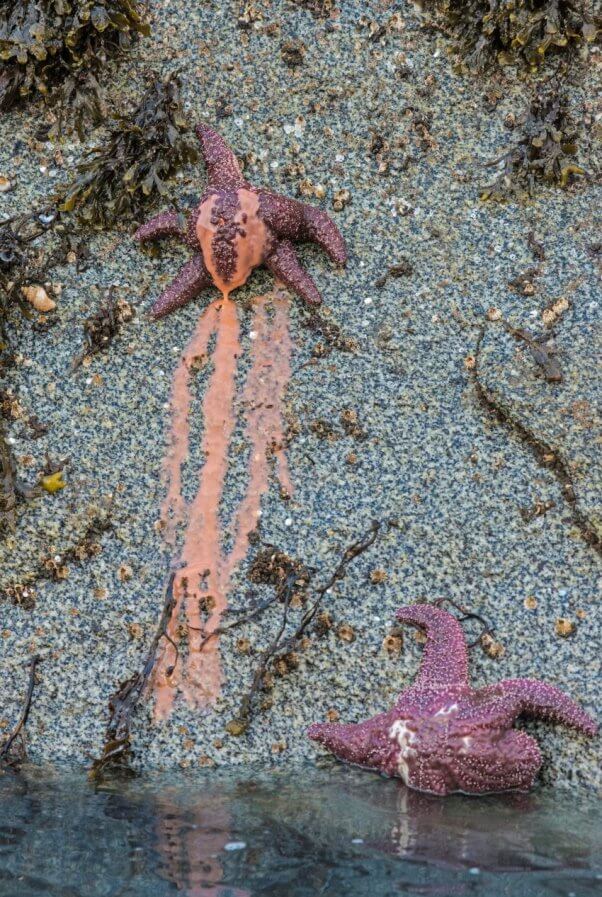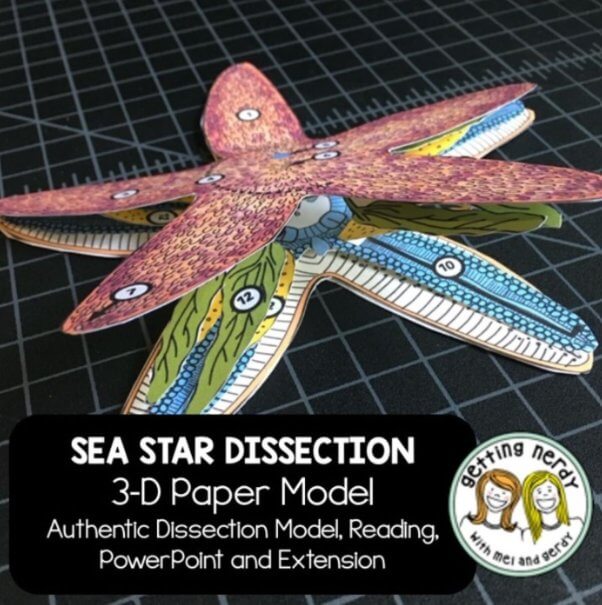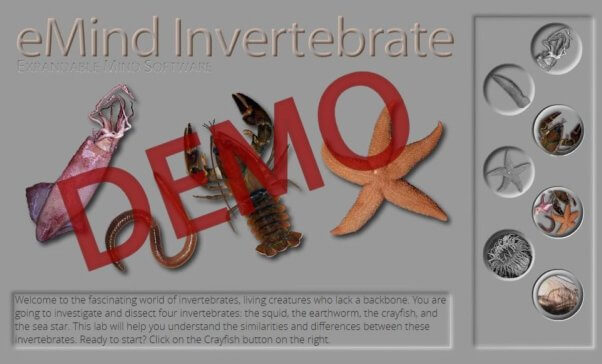Be a Star for Starfish: Help Save Them From Peril
Starfish SOS: A Dreadful Scene Underwater
Starfish, with their mesmerizing colors and graceful movements, have long captivated the imagination. Did you know that they can regenerate lost limbs and even grow an entirely new starfish from a single arm? Despite their name, these fascinating individuals aren’t actually fish but belong to a group of marine animals called echinoderms. They’re voracious predators who help maintain ecological balance in the ocean and can live for up to 35 years. However, they’re facing a dire epidemic known as sea star wasting disease. Unfortunately, some educators are still using them in animal dissection lessons.

What Is Sea Star Wasting Disease?
Sea star wasting (SSW) is a condition that causes starfish to deteriorate rapidly until nothing remains of them but a blob of mush. Symptoms include lesions, tissue decay, and limb loss, eventually leading to the disintegration of the entire animal. This is the largest epidemic ever observed in marine animals. Since 2013, the disease has persisted with alarming frequency, affecting numerous starfish species along the Pacific coast of North America, including members of the Pisaster and Asterias genera, which are the types of starfish commonly used for dissection.

What Causes Sea Star Wasting?
Multi-Agency Rocky Intertidal Network researchers currently studying SSW suggest that although a pathogen is likely involved, environmental factors resulting from the climate catastrophe, such as rising water temperatures, acidification, and deoxygenation, may also contribute and might render starfish more susceptible to the disease. Its exact cause remains a mystery.
The Impact on Ecosystems
Starfish are vital components of marine ecosystems, serving as top predators and keystone species. Unfortunately, the sunflower starfish (Pycnopodia helianthoides) is now listed as critically endangered by the International Union for Conservation of Nature due to SSW. Their population decrease has led to a sudden surge in sea urchins along Pacific coastal regions. This is problematic because sea urchins devour kelp in the absence of predators—and kelp forests are important habitats for many species and are rich in biodiversity. Without the sunflower starfish, only spiky beds of sea urchins remain in areas that once teemed with marine life. Ninety-five percent of the kelp forests along California’s northern coast have been devastated due to starfish decline.
Researchers are also concerned about the fate of the ochre starfish (Pisaster ochraceus) and the rocky coastal areas they inhabit. This species has suffered greatly from SSW and is displaying disease-related trends similar to those observed among sunflower starfish. As vital predators in coastal ecosystems, their decreasing numbers may cause mussel populations to skyrocket, which could reduce the amount of living space available for other species and even change the ecological makeup of coastal communities along the West Coast of the U.S.
The ochre starfish is commonly sold by biological supply companies for less than $3 each. Despite environmental concerns, these businesses continue to profit from the capture and sale of starfish, perpetuating the destruction of marine ecosystems for a cheap, quick classroom dissection activity.

Replacing Starfish in Dissection
SSW serves as a harsh reminder of the profound and harmful impact human activities can have on marine life. While the climate catastrophe likely contributes to the spread of this disease, biological supply companies exacerbate the problem by removing healthy starfish from the environment, denying the population the opportunity to develop disease resistance and perpetuating a cycle of vulnerability.
Companies that claim to provide innovative solutions and products for educational purposes might be expected to prioritize their ecological impact and related ethical considerations. Instead, they prioritize profit despite the appalling ecological destruction they wreak through persistently capturing members of keystone species suffering from an epidemic. As long as schools continue to purchase the corpses of sentient beings for dissection, these companies will inflict horrific deaths on vulnerable animals and lay waste to nature. Abandoning animal dissection would not only spare millions of animals but also contribute to the preservation of important ecological habitats for generations to come.
Leave Starfish in the Ocean—Choose Options Like These Instead!
There are many humane alternatives to dissecting animals, including starfish. At TeachKind Science, we love these animal-free options that spare starfish and deliver effective science lessons:
- The 3-D sea star dissection bundle from Getting Nerdy offers materials for a comprehensive 2- to 3-day lesson on starfish. Although this company’s materials are designed for middle school science classes, they’re also suitable for high school general biology lessons.

- The invertebrate module by Expandable Mind Software features a virtual starfish dissection alongside detailed studies of three other invertebrates, making it an ideal resource for advanced biology and anatomy courses.

Both of these cruelty-free tools allow a thorough examination of starfish organs and the opportunity to identify and label them accurately, unlike traditional dissections, in which they’re often obscured and indistinguishably mashed together. These superior methods remove significant obstacles to studying starfish anatomy while leaving these animals where they belong—in their ocean homes.
Cruelty-Free Methods Are Cost-Effective
In addition to being humane and offering superior learning opportunities, these resources are economically advantageous. Unlike animal corpses, which can only be cut up once, these materials can be used again and again, saving money and lives at the same time. If you need help funding the purchase of humane dissection tools, e-mail us at Info@TeachKind.org.
With these effective, humane, and environmentally friendly options available, all science educators can embrace dissection with a compassionate, progressive approach!





